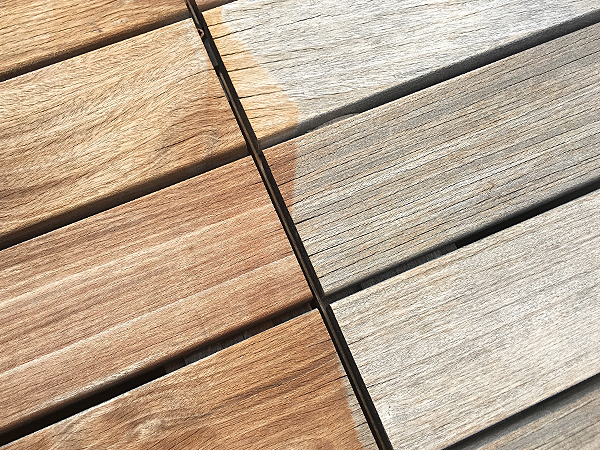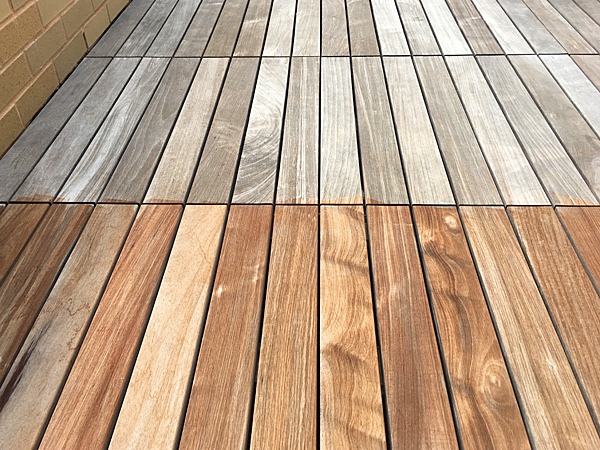
I recently bought a solid teak bench that has not been maintained for years. What is the best method for restoring the wood and removing the gray, old, oxidized wood layer? Scraping? Sanding? – Kimberly J. Sutherland
Tim Inman: My best advice is this: if you wish to enjoy the teak bench outside, then learn to enjoy that wonderful soft gray patina. Teak will not rot, and it will last outside forever. It will turn gray and it will get a soft “fuzz” from UV light breakdown. You can’t stop that from happening. If you put finish on it, the finish will sooner or later crack and fail. This leaves behind a very objectionable “spoiled” look and feel, which is a bearcat to deal with. If, on the other hand, you wish to take the teak indoors, then simply surface sanding to remove the UV grayed surface fibers is what you’ll need to do. Then you can proceed to finish it as you wish.
Chris Marshall: I agree with Tim. That gray patina on outdoor furniture or decking, for me, is a sign that the wood is aging gracefully outdoors. Even so, you can remove the discoloration pretty easily if you want to with a liquid deck cleaner that contains oxalic acid (the gray is just surface deep, in most cases). Apply the cleaner, wait the specified time, and then hose or power-wash it off. The transformation back to “wood” color is quick and almost magical, but it won’t last forever. Unless you are diligent about refinishing that bench, then maintaining the finish over time, the wood will to turn silver gray again if it lives outside, as Tim explains. So, I’ve just decided to appreciate that color instead and save myself the extra maintenance work.






